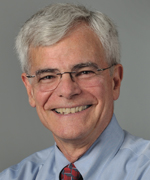From the Deputy Director for Intramural Research
Long-term Planning at the NIH: The End of the Beginning

Two years ago, the NIH intramural program began the long process of long-term planning, with a 5-10 year event horizon. This activity was driven by the reality of a 30 percent decline in the purchasing power of intramural funds over the past 10 years, a change in the way in which we conduct science, the need for much more workforce diversity, and a need to provide appropriate funds to maintain the NIH Clinical Center as the preeminent clinical research facility in the world. This lengthy long-term planning process included many consultations with NIH Institute and Centers (IC) directors and scientific directors, individual recommendations from blue ribbon panel committees established in each IC using both intramural and extramural experts, a synthesis of these ideas by the scientific directors, and a report last December 12, 2015, by an external subcommittee of the Advisory Committee to the Director (ACD), co-chaired by Cato Laurencin (University of Connecticut in Storrs) and our Principal Deputy Director, Larry Tabak.
To implement the ACD report, the Office of Intramural Research assembled a response and implementation plan that has been vetted by IC Directors, scientific directors, and an implementation committee consisting of a broad spectrum of tenure-track and tenured intramural scientists, scientific directors, the Assembly of Scientists, and administrative leadership. The hard work of all of these groups led to a document that included 44 specific recommendations that was presented on June 12, 2015, to the ACD where it was enthusiastically received. In consequence, NIH Director Francis Collins has urged us to move ahead with implementation of this long-term plan, which includes many new ideas for ways in which we support and conduct science, and a summary of research areas in which the IRP is perfectly poised to make major advances.
The report addresses four major areas in which change is contemplated:
- The NIH Clinical Center (CC) will remain the centerpiece of translational research at the NIH with assured and appropriate funding, more alliances with the neighboring extramural clinical research community, and an enhanced role in training the next generation of physician-scientists, and in developing career tracks for clinical investigators. The CC is a rich repository of phenotypic data on patients with both rare and common diseases, and assuring that genotypic data is obtained on a large cohort of CC subjects is critical to advance genotype-phenotype correlations. The CC will be a referral center for subjects with unusual genotypes where comprehensive phenotyping is essential to understand their biology.
- The NIH IRP will become a role model for improving the diversity of the biomedical workforce. We will cast the widest net possible for scientists in all research positions at the NIH, develop new pathways for career development that allow investigators to graduate more quickly to independence, develop a central program for recruitment, mentoring, and career development of postdoctoral fellows, and enhance existing entry-level programs for students from diverse backgrounds.
- To become a dynamic research environment for new generations of imaginative scientists, we will encourage trans-NIH recruitments, such as the Stadtman Investigator and NIH-Lasker Clinical Research Scholars program, we will support the careers of staff scientists and clinicians and encourage and reward team science, and create new pathways to independence such as the assistant clinical investigator and a new assistant laboratory investigator position.
- NIH will create new pools of funds at the IC level as well as centrally to encourage flexibility of support for new programs and research opportunities. Centrally, these funds will be gradually established as the NIH budget allows, to equal approximately one percent of the NIH intramural budget. These funds will be used to stimulate new initiatives, support new recruitments, and encourage trans-NIH collaborations.
In addition to these process changes, the IC-specific recommendations for areas deserving of research priority led to a set of crosscutting research areas that have been embraced by our scientific leadership and staff. One area of universal interest is the development of a technology incubator at the NIH where new instrumentation for optical exploration of cells, new initiatives in structural biology (i.e., use of cryo-EM for atomic resolution of structures of proteins bound to small molecules), and new clinical imaging modalities could be developed. Such a resource would enable recruitment of talented early-career investigators and provide a sabbatical cradle for nurturing new ideas.
There were nine areas of crosscutting science that are described in more detail as an attachment to the response and implementation plan. These include the study of chronic inflammatory diseases, support of gene- and cell-based therapies, studies on the microbiome and its role in health and disease, drug-resistance studies in microbes and in diseases such as cancer and epilepsy, the neuroscience of compulsive brain behaviors (addictions, obsessive-compulsive, and eating disorders), RNA biology and therapeutics using and targeting RNA, vaccine development, natural products, and the creation of novel animal models. Although these areas are by no means meant to limit basic and clinical research at the NIH, they are judged to be areas of particular promise worthy of additional support and encouragement.
This fall at the 2015 Research Festival, on September 16 to 18, we will highlight these research areas and kick-off the NIH intramural long-term plan. I look forward to seeing you there!
You can find the long-term reports (ACD LT IRP Working Group reports) at http://acd.od.nih.gov/meetings.htm.
This page was last updated on Monday, April 25, 2022
